It’s 6 o’clock in the morning. The early sunlight glimmers through the bright green leaves of the giant cedar trees, many of which have been standing here for hundreds of years. The sounds of birds singing can be heard from every direction, yet there is not a single bird to be seen.
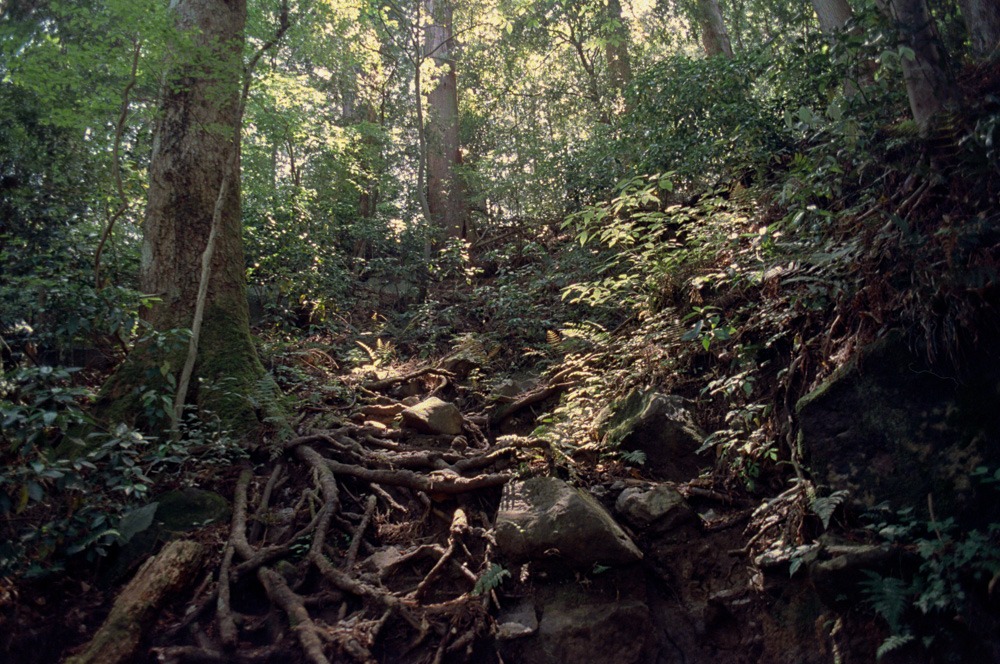
We are walking down the hill, stepping over the bulging tree roots and moss-covered stones.
Suddenly, an elephant-like screech pierces through the forest. And a roaring tyrannosaurus rises behind us!
OK, OK… That last part with the dinosaur was obviously a lie (although, a nice wild dinosaur would certainly fit well into this old forest).
However, the elephant-like sound is true. But to be precise; there aren’t really any elephants around here. The screech that suddenly broke out at this early hour came from a Buddhist monk blowing a horn at a temple not far away, and it indeed sounded kind of like an elephant trumpet. It’s part of the morning ritual at the place we are visiting today — the Daiyuzan Saijoji, a centuries-old temple complex nestled in the mountains of southwestern Kanagawa Prefecture.
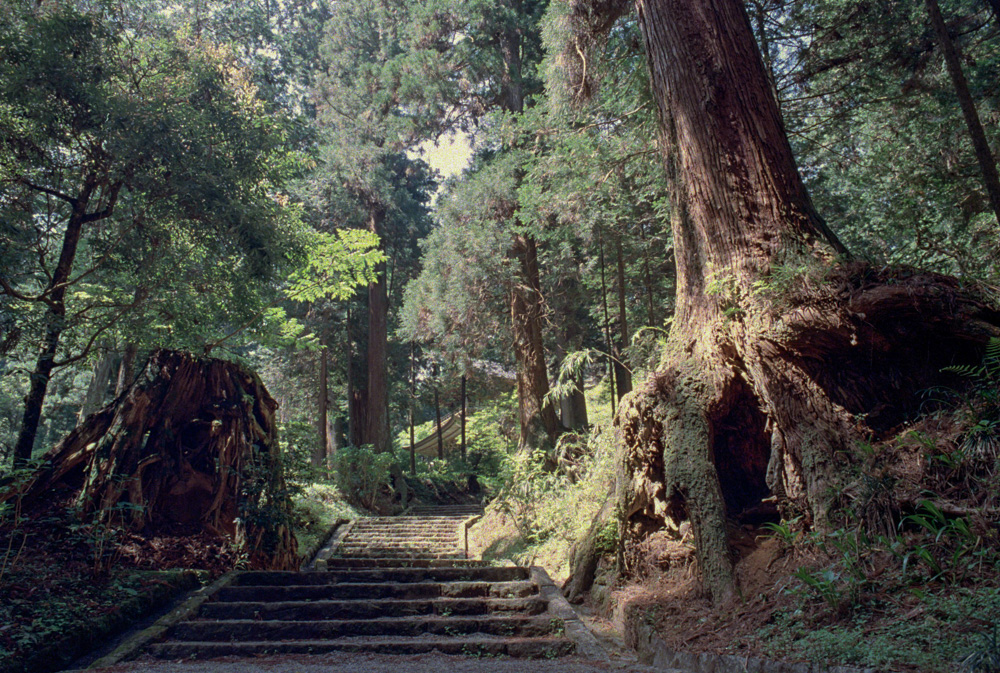
The approach to the temple is truly something like you’d see in a fantasy movie — you are surrounded with aged, majestic cedar trees that become taller and wider the closer you get to the temple (making you feel smaller and smaller at the same time).
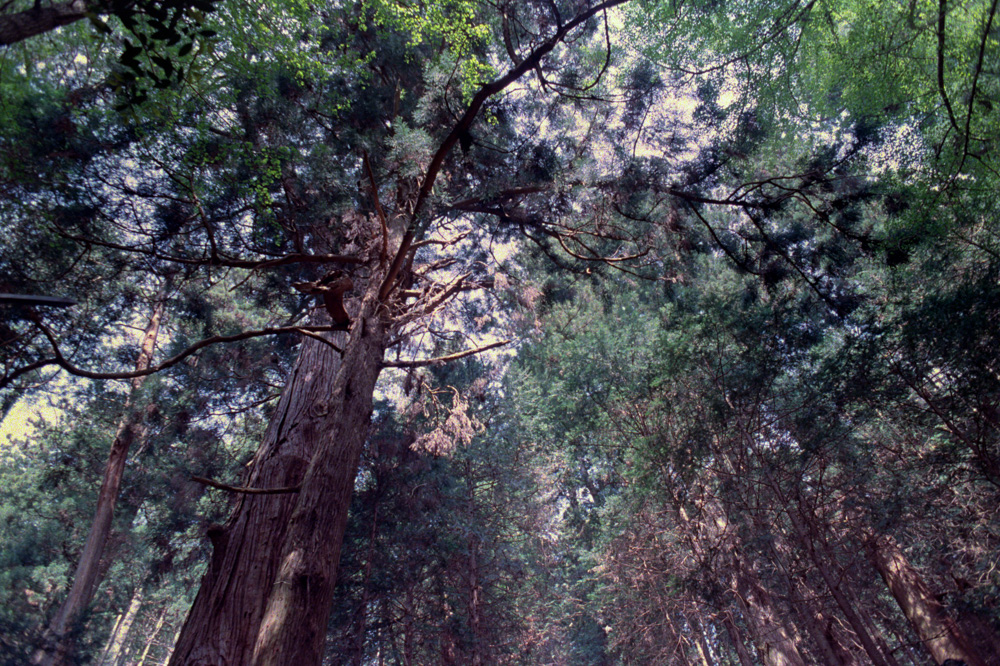
The paved road that leads to the temple precincts is lined with tombstones and stone lanterns.
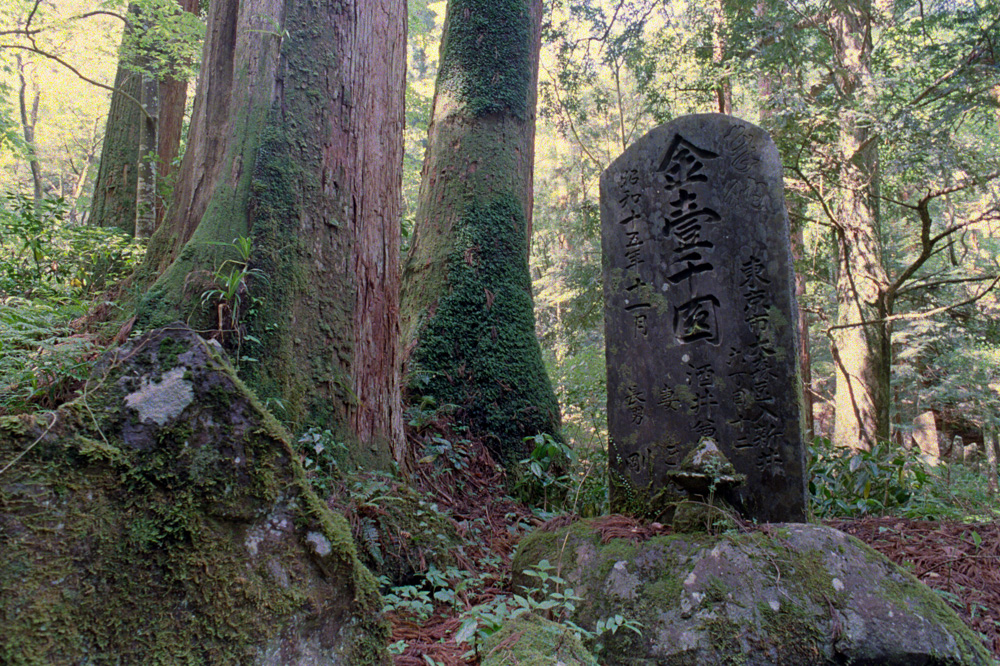
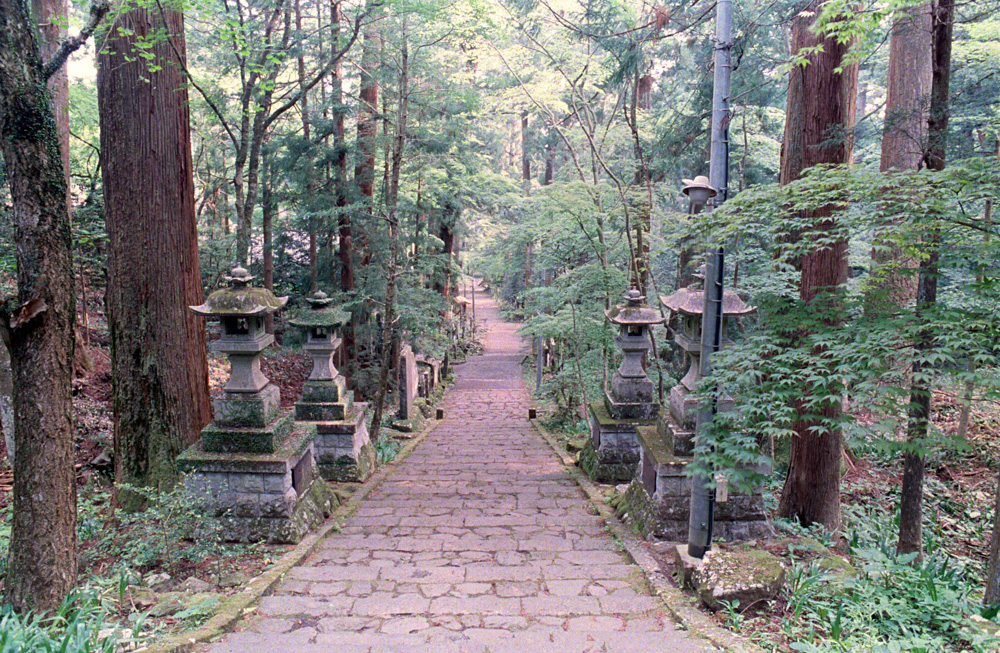
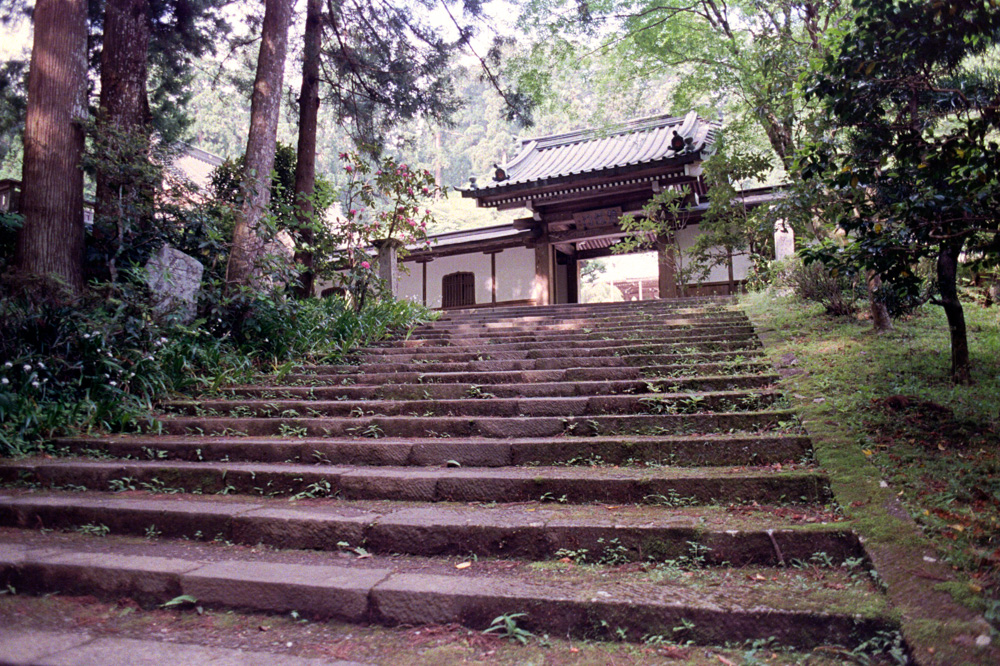
Daiyuzan Saijoji, belonging to the Soto Zen Buddhism, is a large complex of more than 30 temples and shrines. It was built over 600 years ago, in 1394.
Passing through one of the entrance gates, we arrive to the spacious main area.
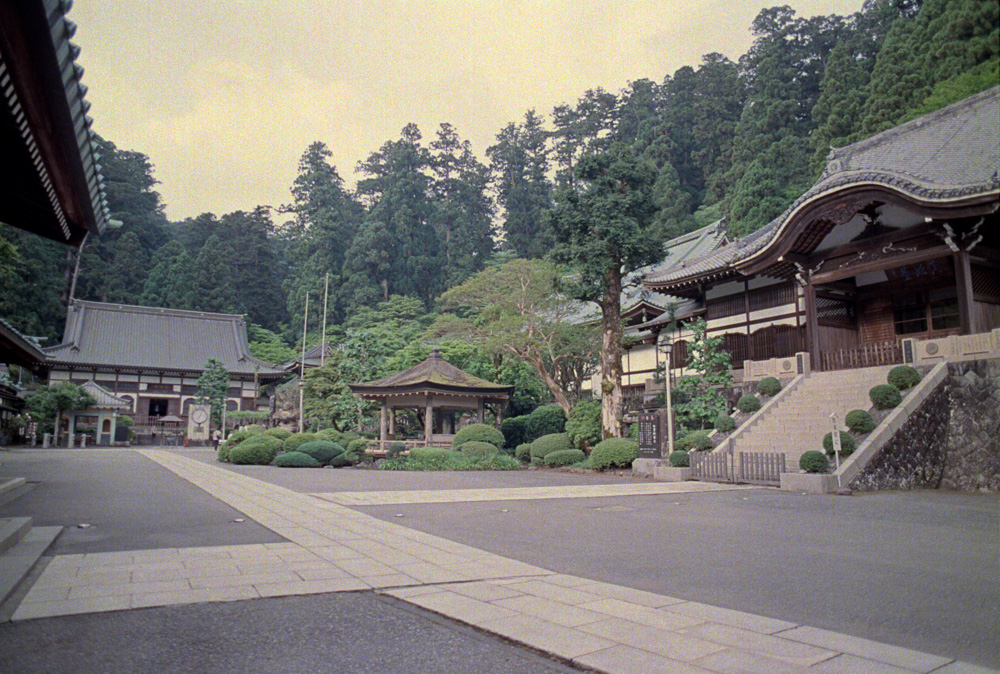
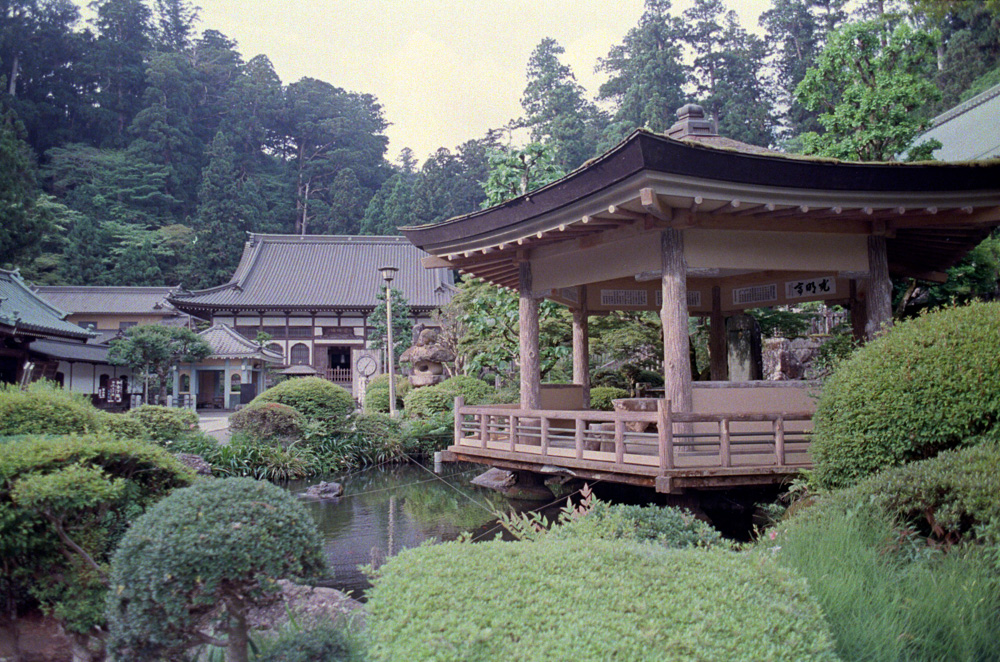
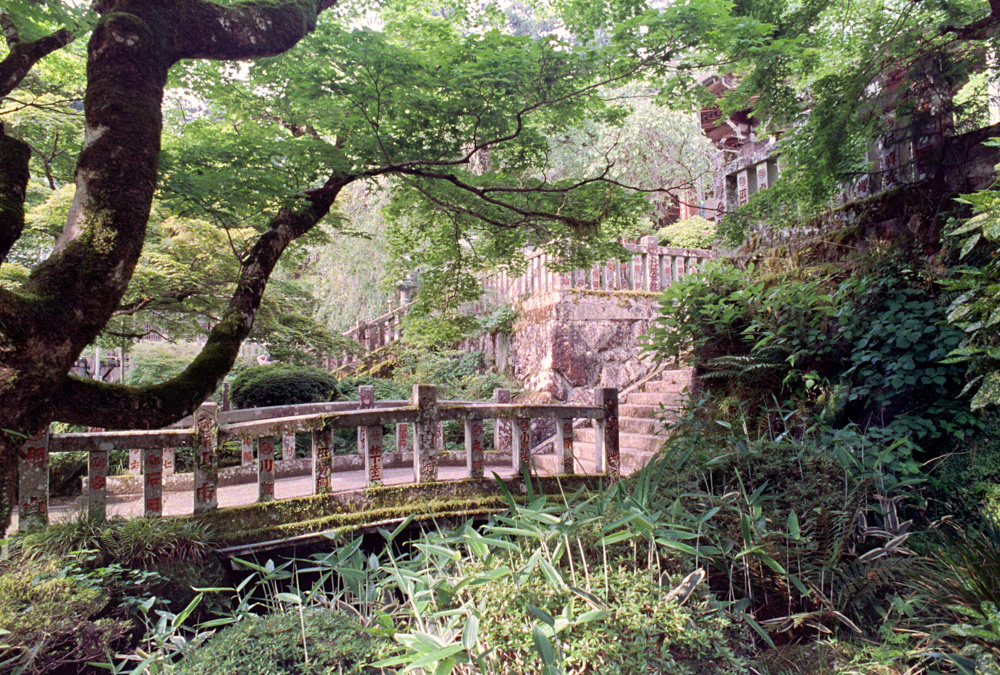
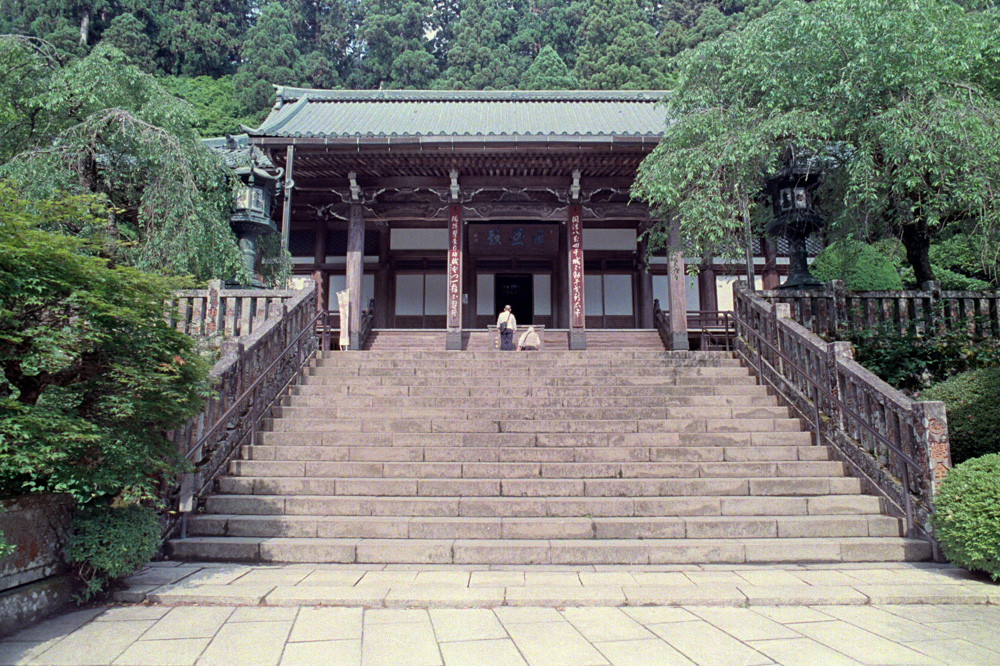
The staircase in the northwestern corner lead to the main hall that stands at the bottom of a hill with many more structures and monuments, and abundance of nature.
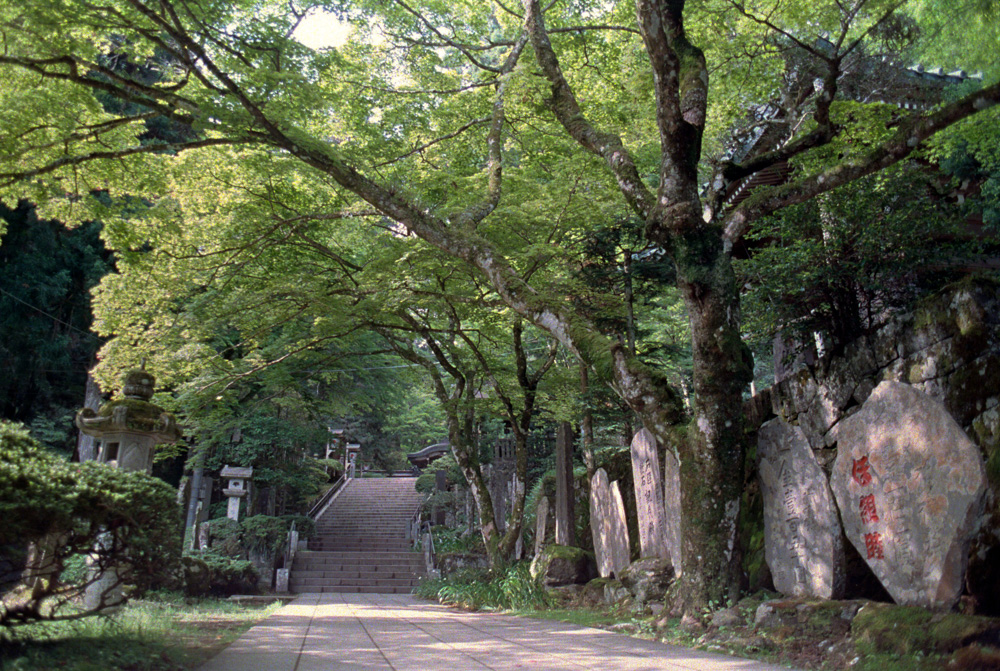
One of the buildings that stand out is a pagoda called “Taho-to”, built in 1863.
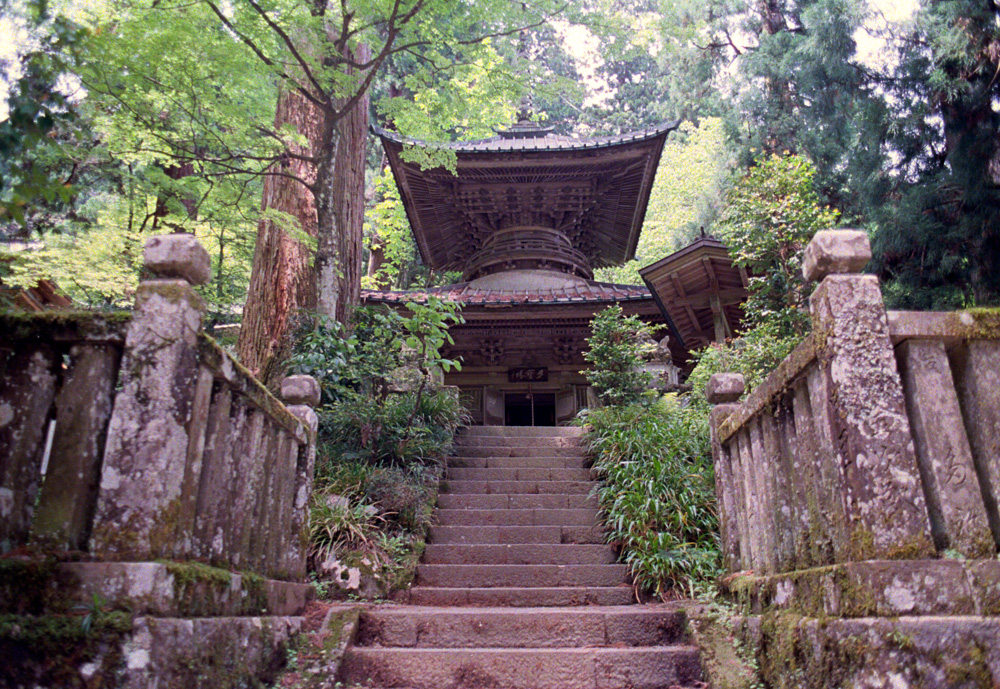
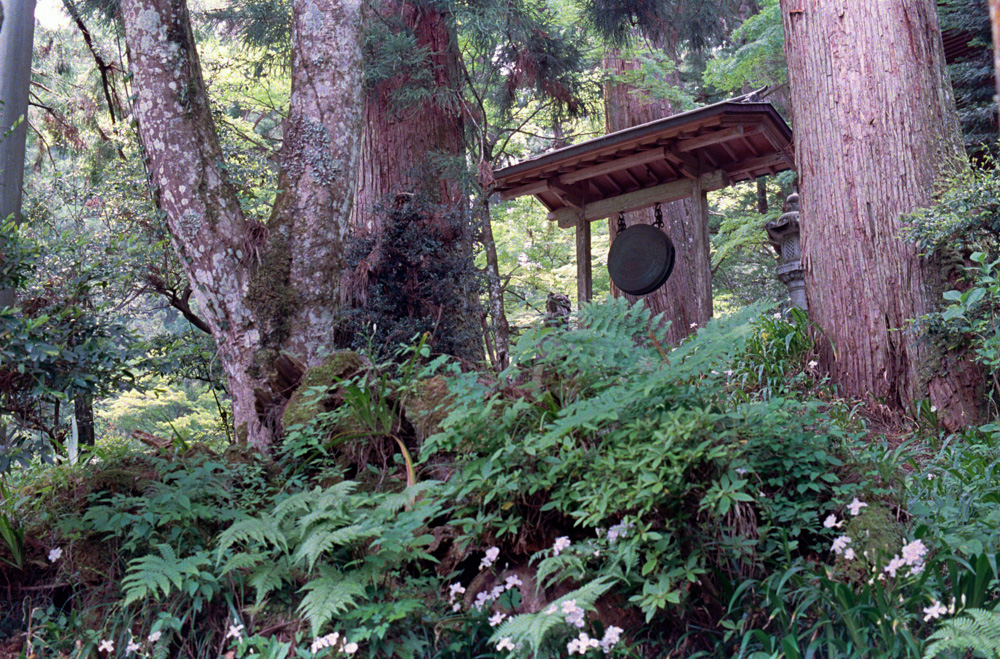
Nearby is an idyllic waterfall, called “Senshin Waterfall”, known as a so-called power spot where you can “purify your heart”.
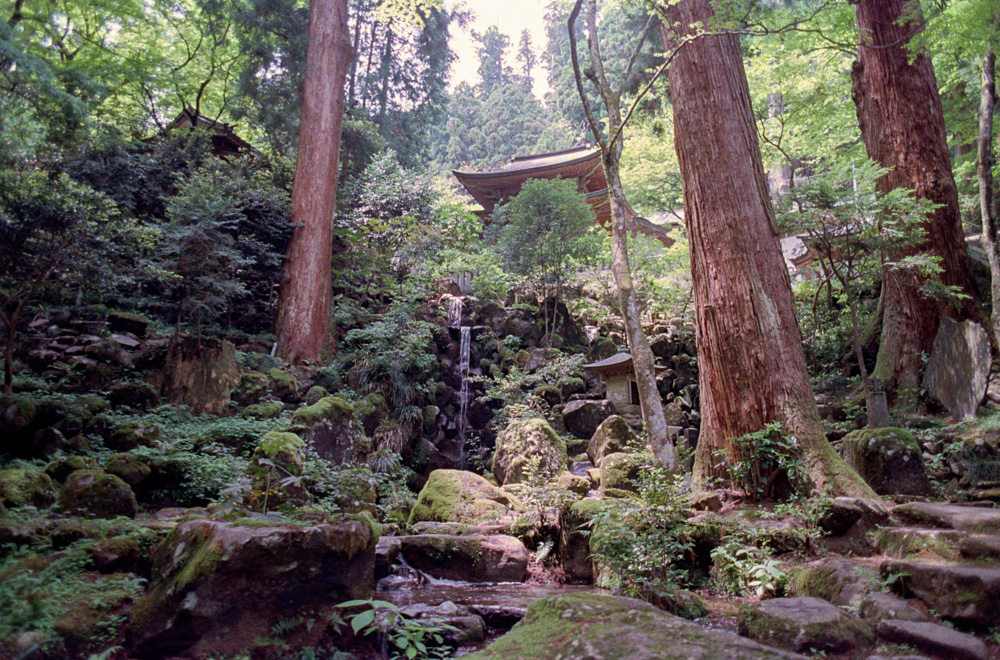
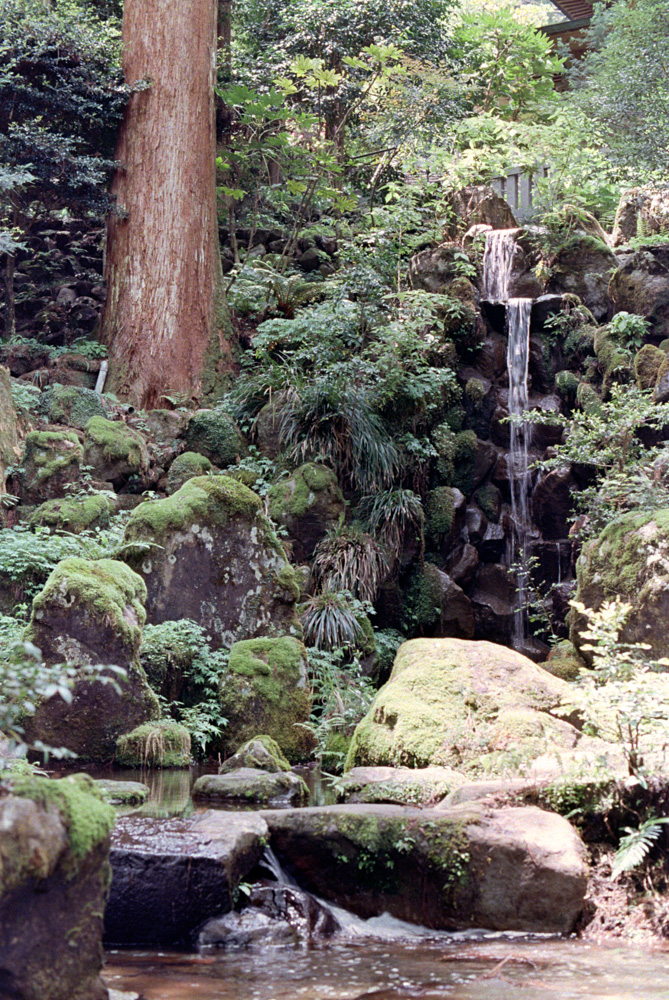
Adjacent to the waterfall is the gate called “Kekkaimon”, with statues of two tengu standing on both sides.
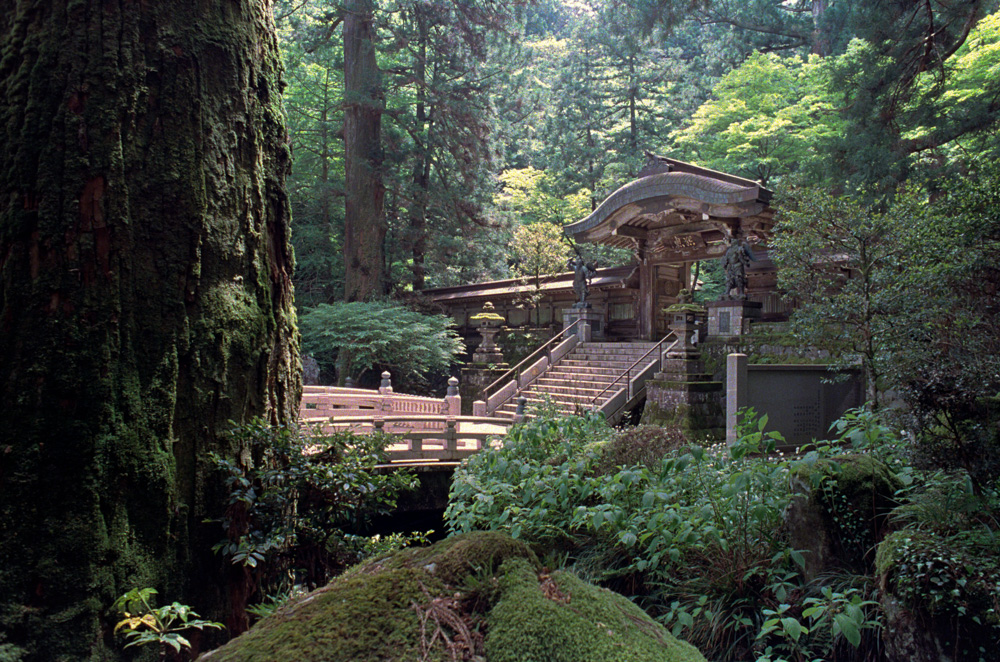
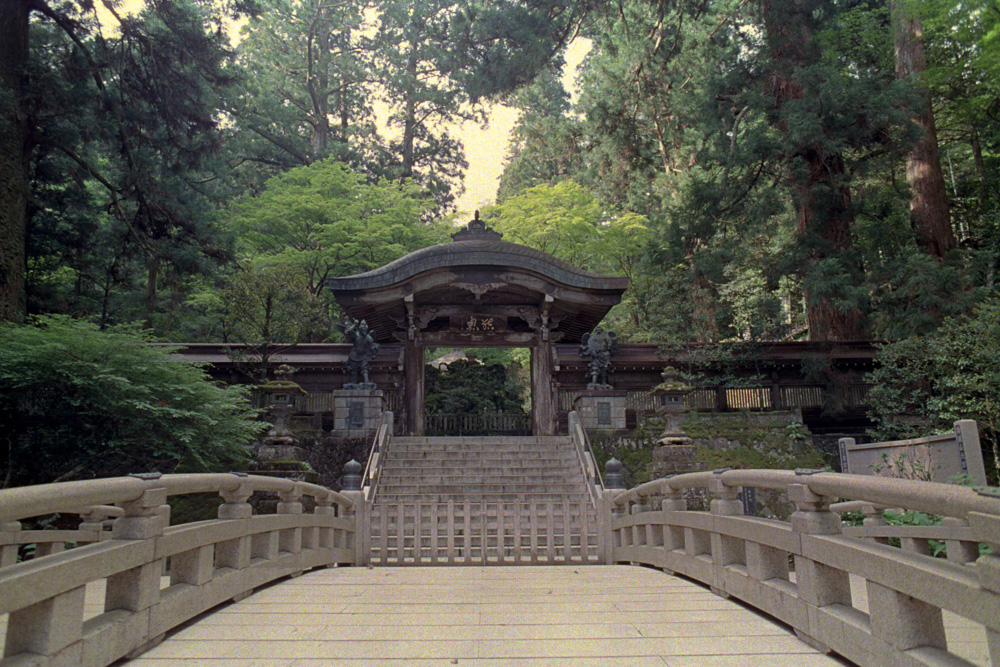
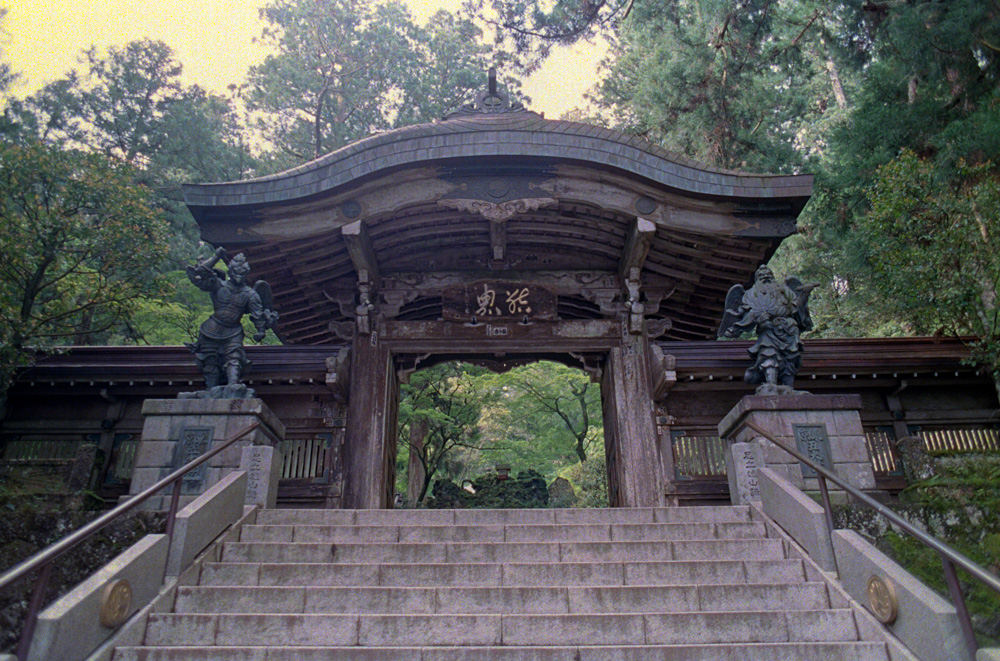 What is a tengu? In Japanese mythology, the tengu — long-nosed goblins with large wings — are mischievous mountain creatures and messengers of gods. Daiyuzan Saijoji is a temple with a deep connection to the tengu. Legend has it that after the death of Ryoan, the priest who built this temple, his disciple Doryo metamorphosed into a tengu and vowed to become the guardian of the monastery. According to the legend, “his body was engulfed in flames as he appeared transformed and stood on a white fox, promising a life free of illness and full of riches for those who sincerely worshipped him.” (source)
What is a tengu? In Japanese mythology, the tengu — long-nosed goblins with large wings — are mischievous mountain creatures and messengers of gods. Daiyuzan Saijoji is a temple with a deep connection to the tengu. Legend has it that after the death of Ryoan, the priest who built this temple, his disciple Doryo metamorphosed into a tengu and vowed to become the guardian of the monastery. According to the legend, “his body was engulfed in flames as he appeared transformed and stood on a white fox, promising a life free of illness and full of riches for those who sincerely worshipped him.” (source)
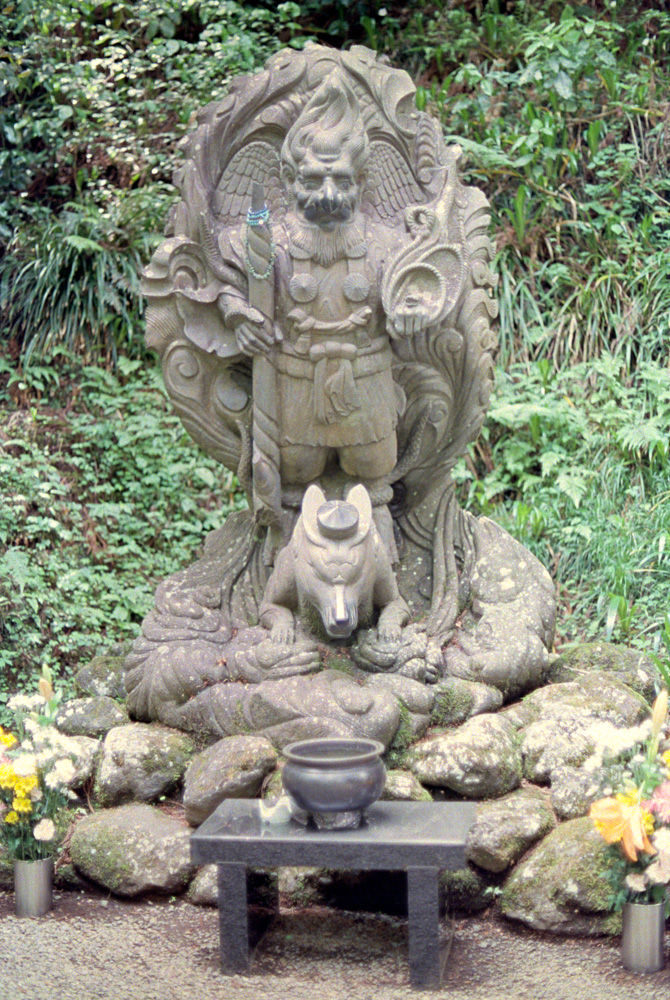
Now that you know the legend and are not afraid of the tengu anymore, let’s pass through the gate.
We arrive to a courtyard with a shrine surrounded by thick cedars…
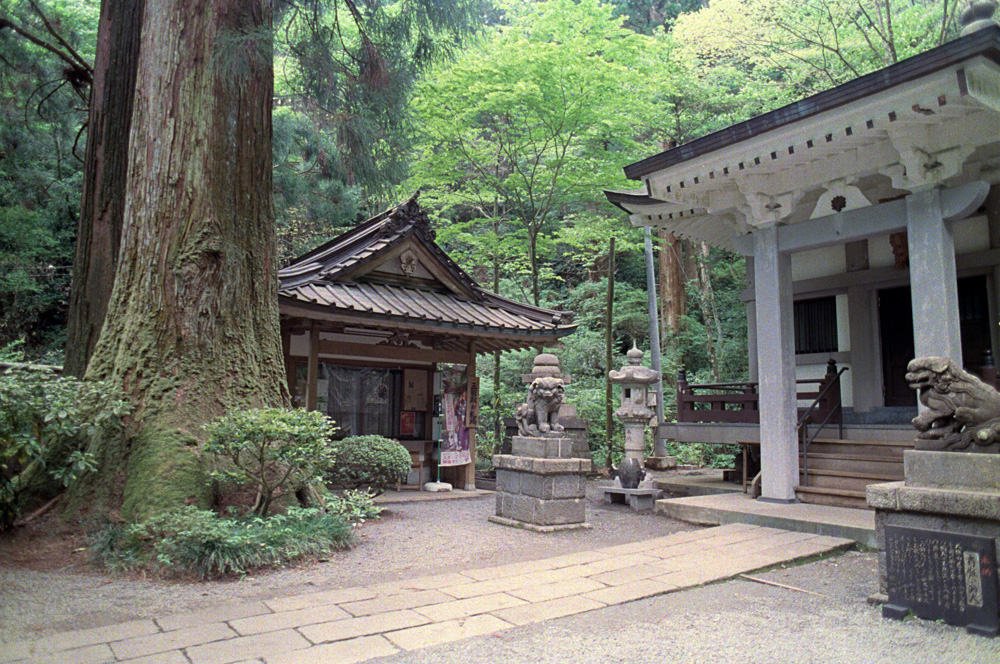
…that make humans look like small insects!
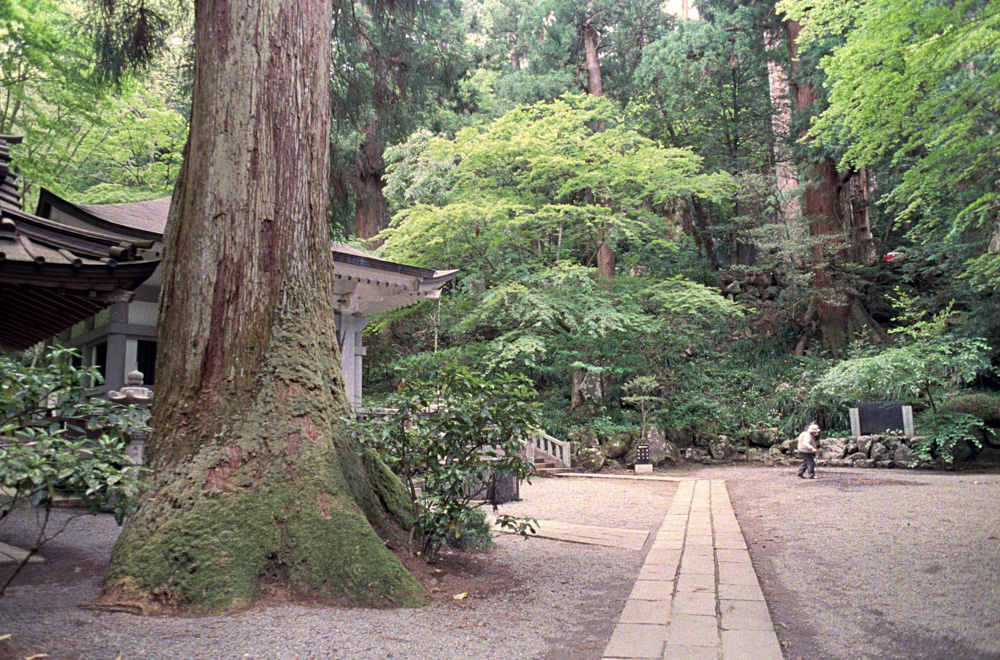
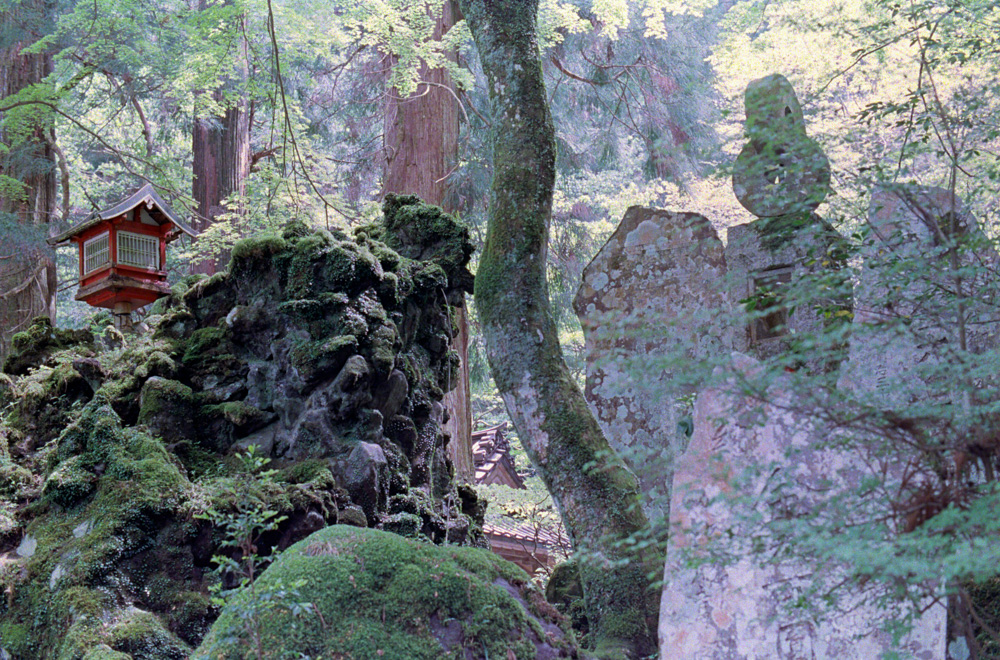
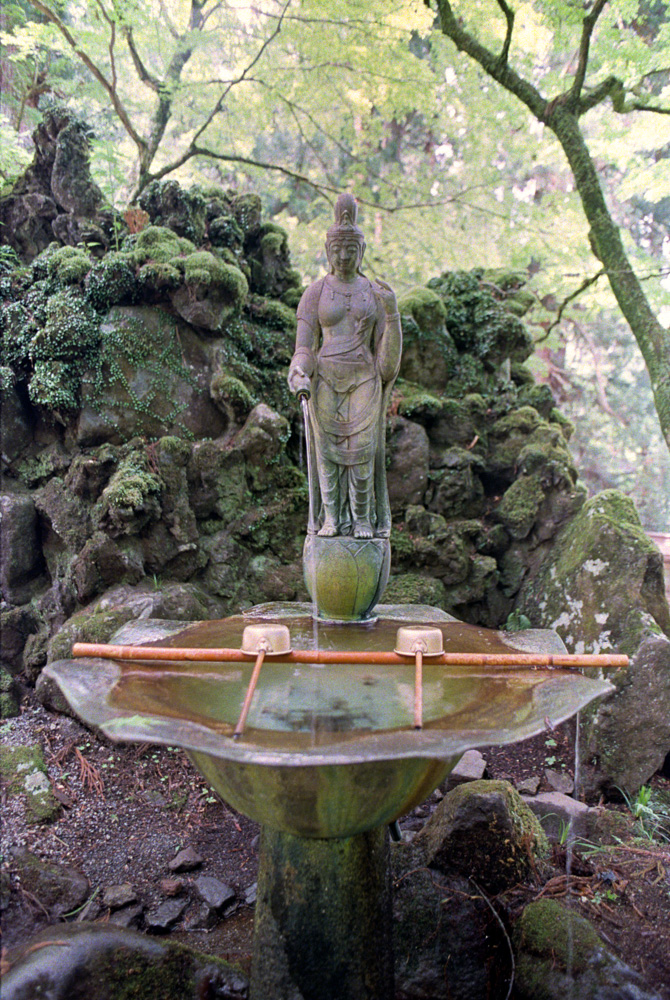
Are you ready to climb up some stairs? There is a prize waiting at the top!
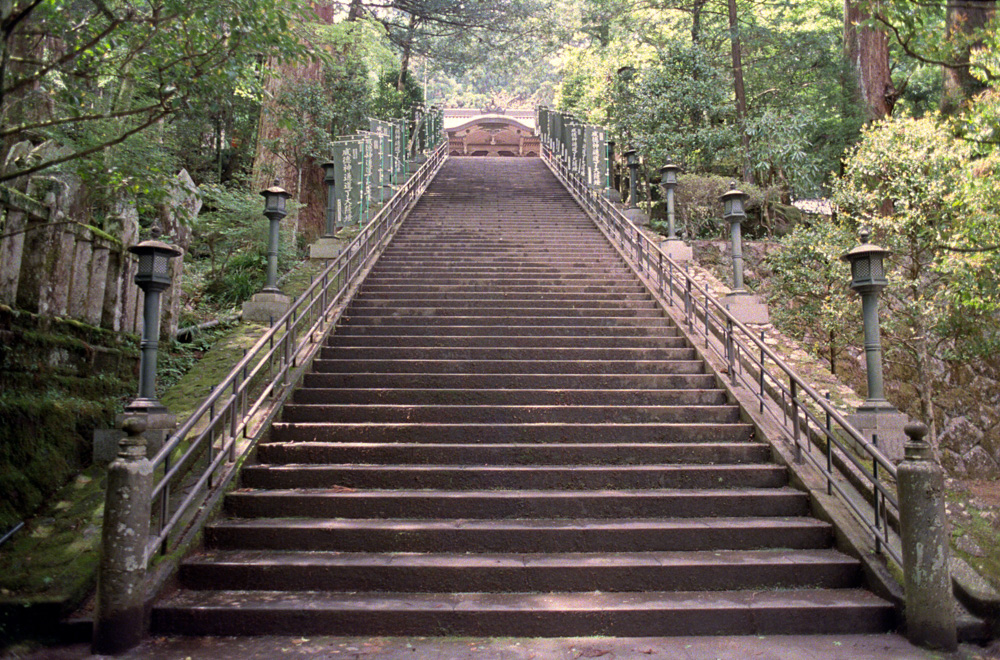
Ascending the 77 stairs brings us to another temple sitting at the top called “Goshinden”, and just to the left of it we find an area with many…
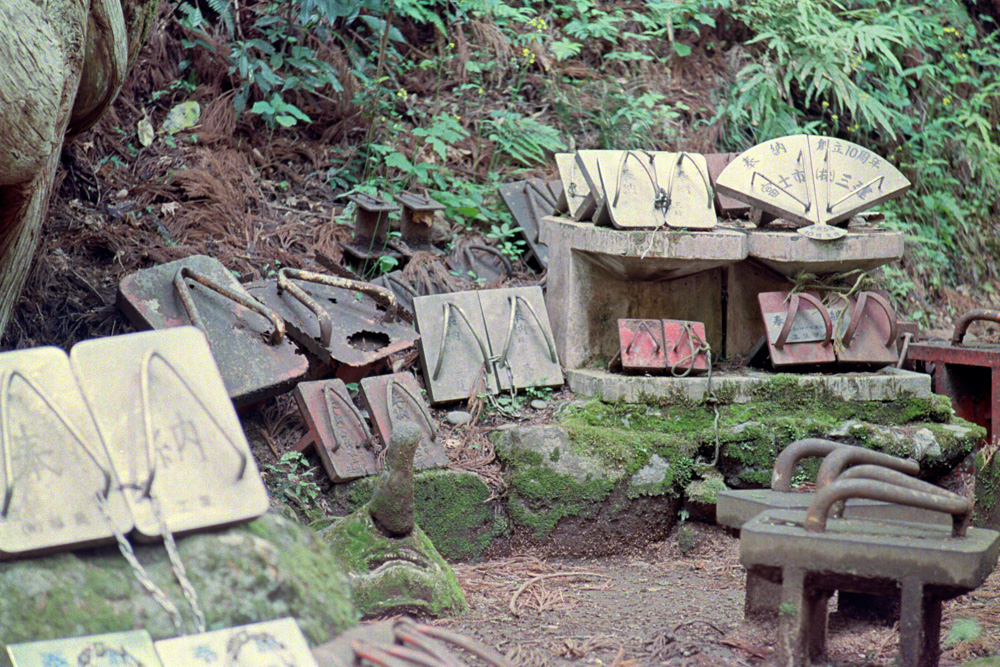
…many metallic geta sandals!
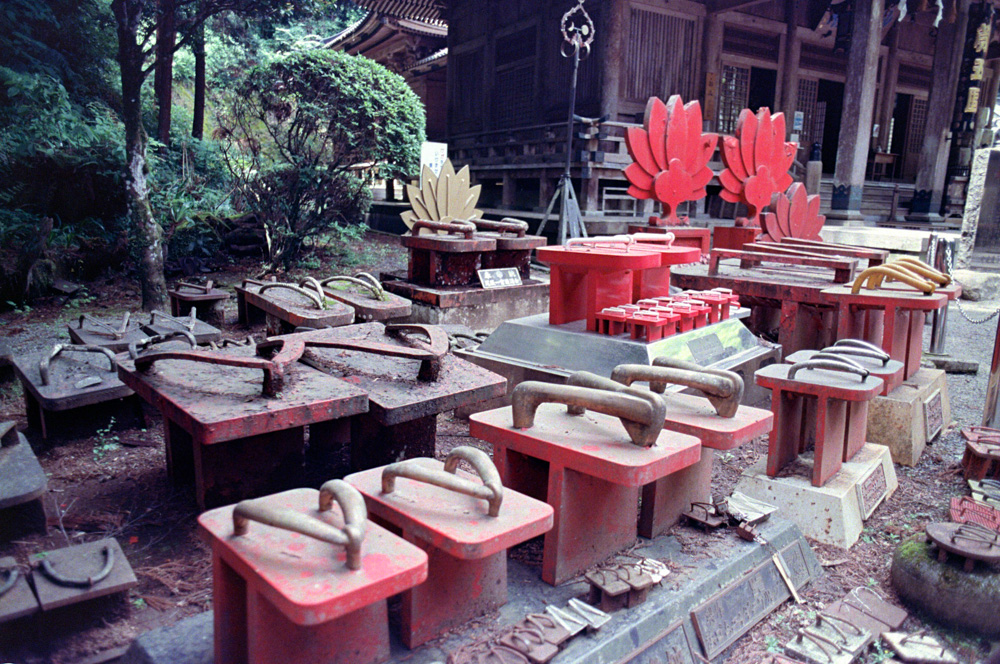
And the prize… a pair of the largest geta sandals in the world, known as the “Wago Geta”!
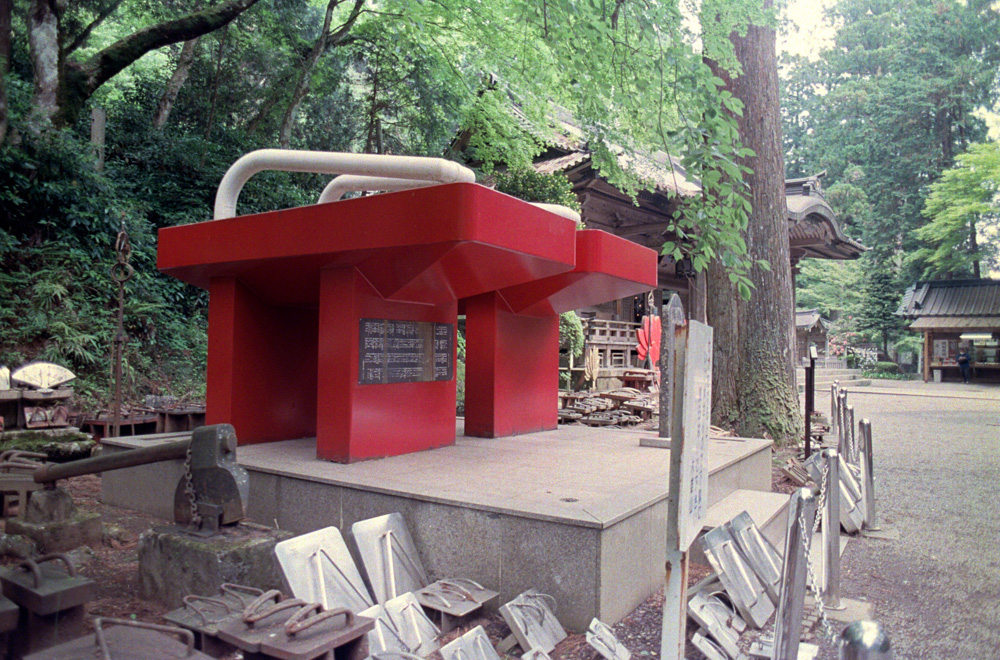
The Wago Geta are said to have been worn by the legendary tengu I mentioned before. Imagine how huge the creature must have been! This massive geta are made of metal, over 1 meter in height, and weigh 3.8 tonnes.
The reason why there are many geta sandals here is the belief that the geta will bring happiness to marriage — it is said that marital harmony can be achieved only if both left and right geta are aligned.
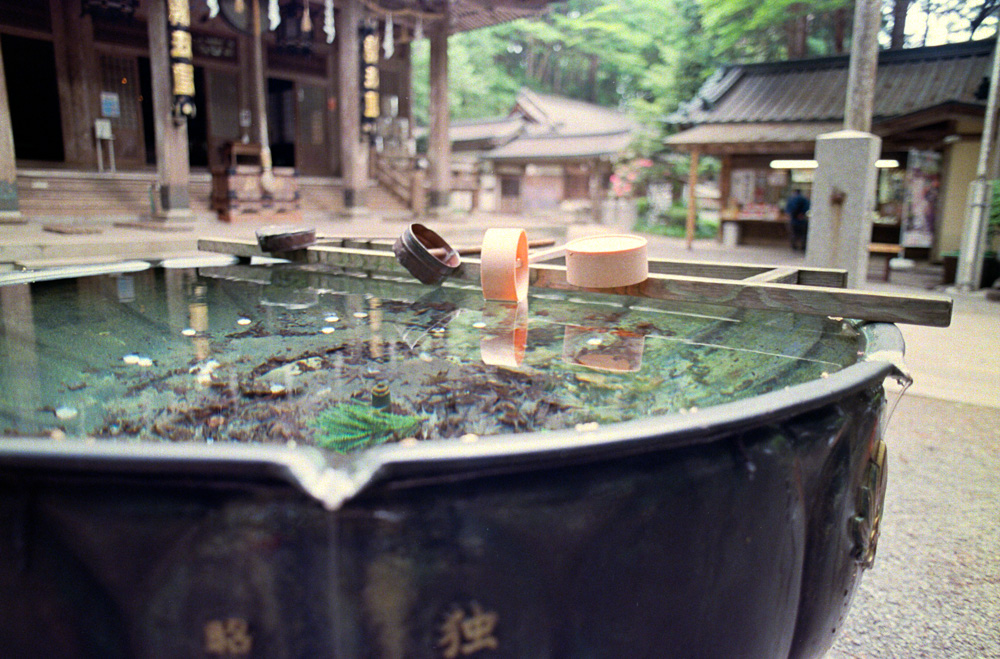
We pass the statue of Kanzeon Bosatsu, the eleven-faced a goddess of compassion and mercy. This is one of the most common figures encountered around temples in Japan.
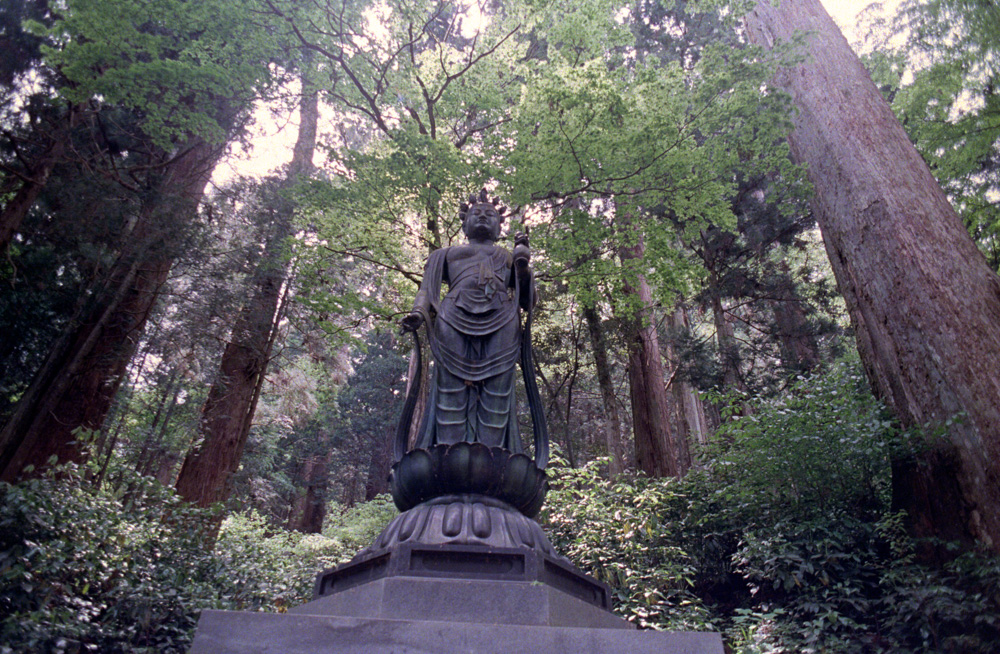
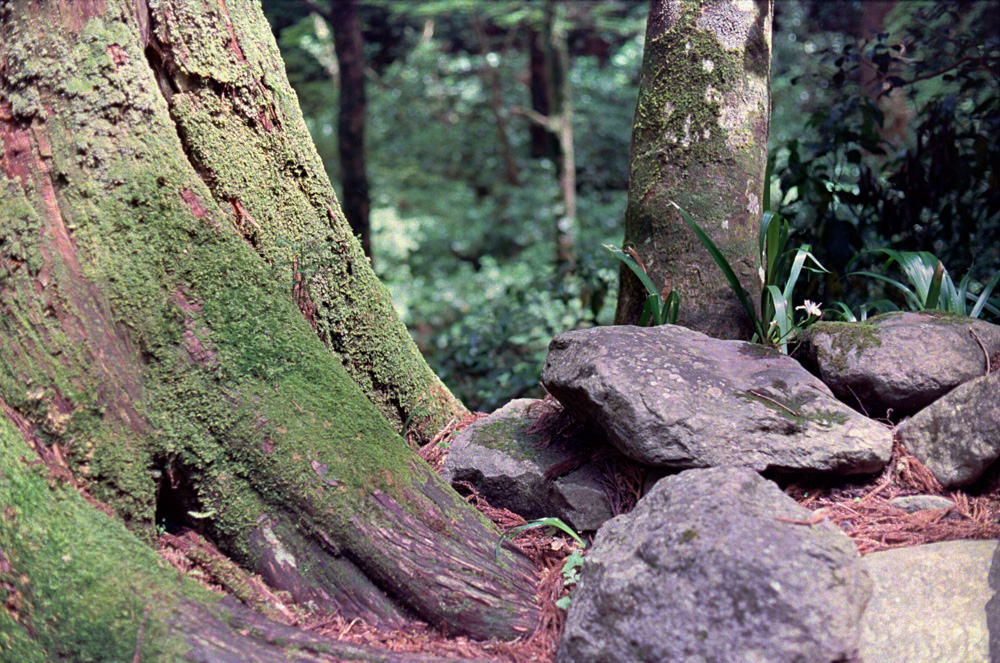
And now, we have come to the final, and the most spectacular place in the complex — the stone stairs to Okunoin (“Inner Temple”). Without hesitation, we walk up the stairs, and just when we reach the top…
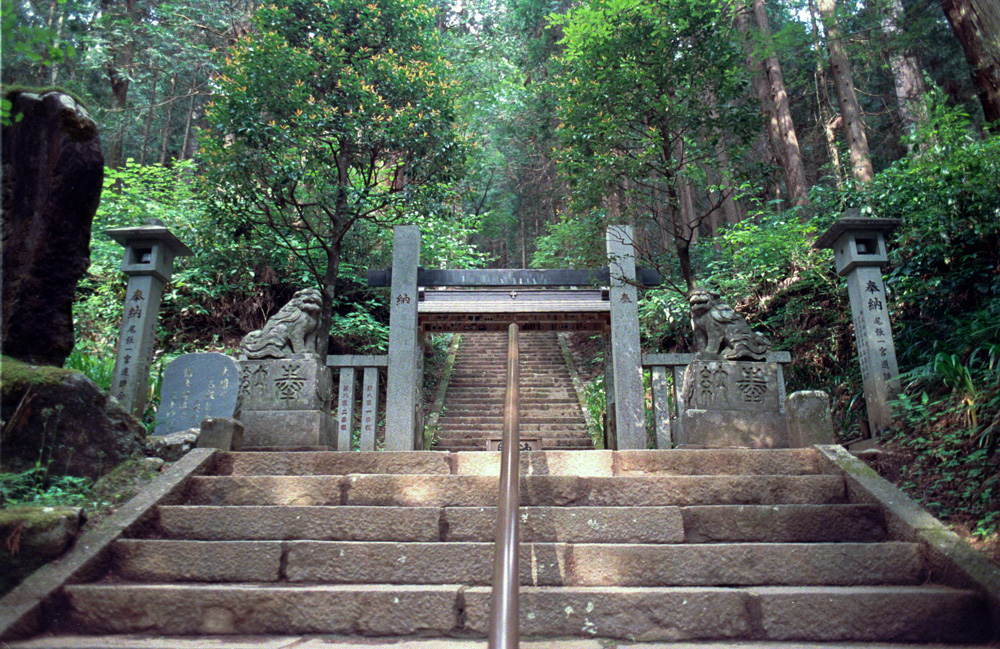
…we find another set of stairs!
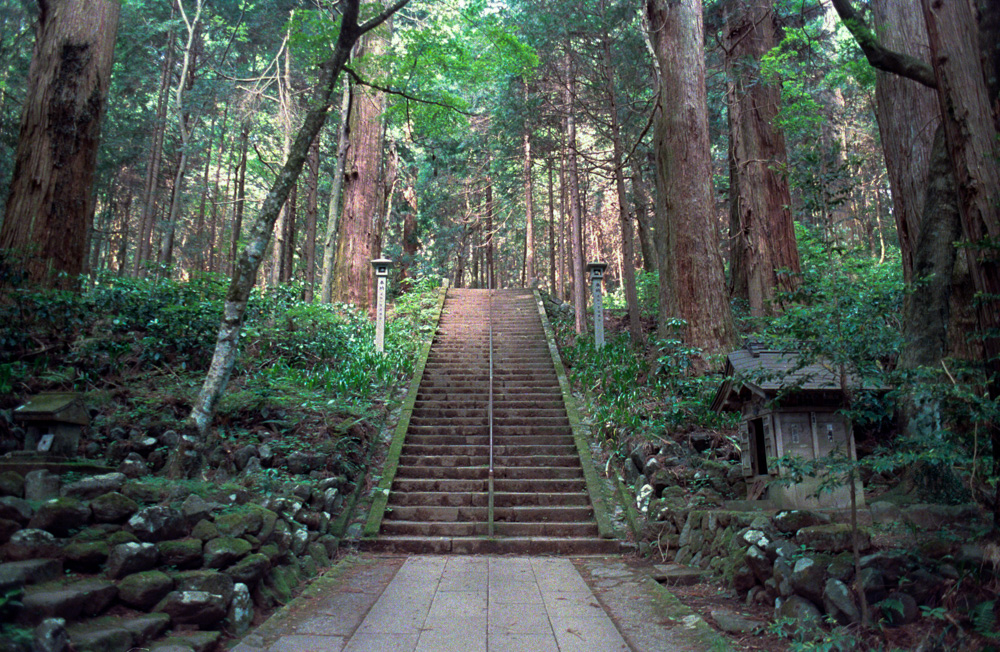
There is a grand total of 354 stairs! But to our advantage, the humid summer is still a couple of months away, so with just a little bit of suffering, we can reach the top.
The view of the forest is like looking back centuries ago — this is what a forest looks like when it’s not disturbed by human activity.
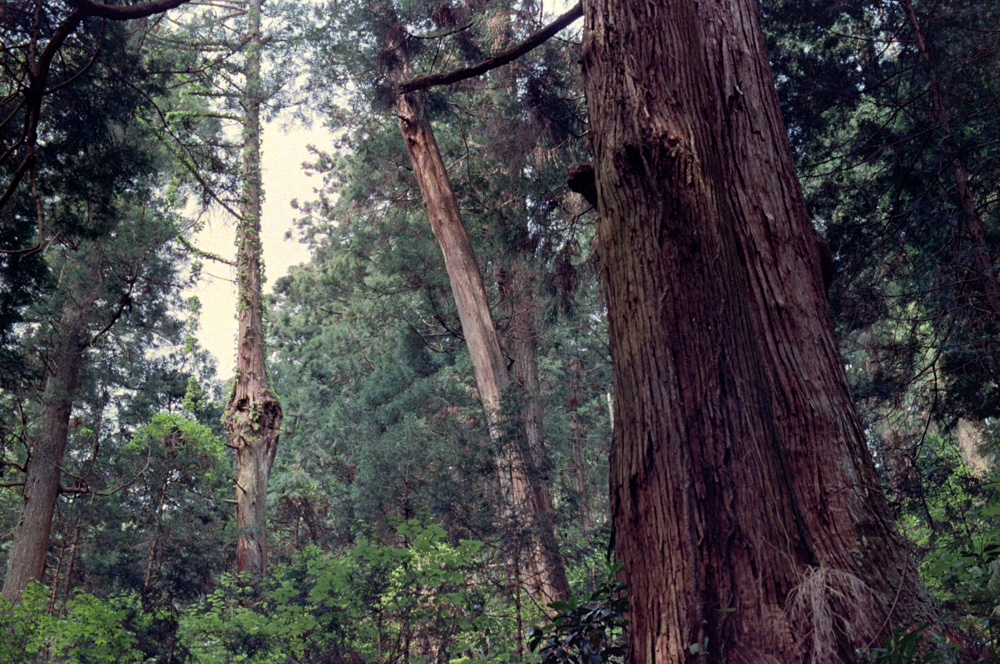
We’re almost halfway through the steep stairs, arriving to…
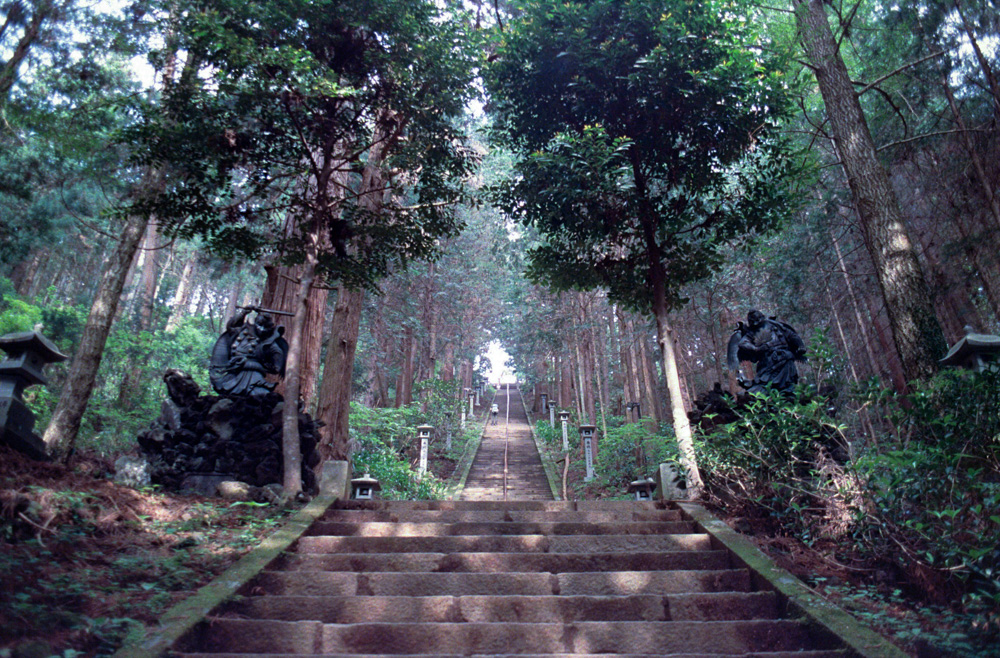
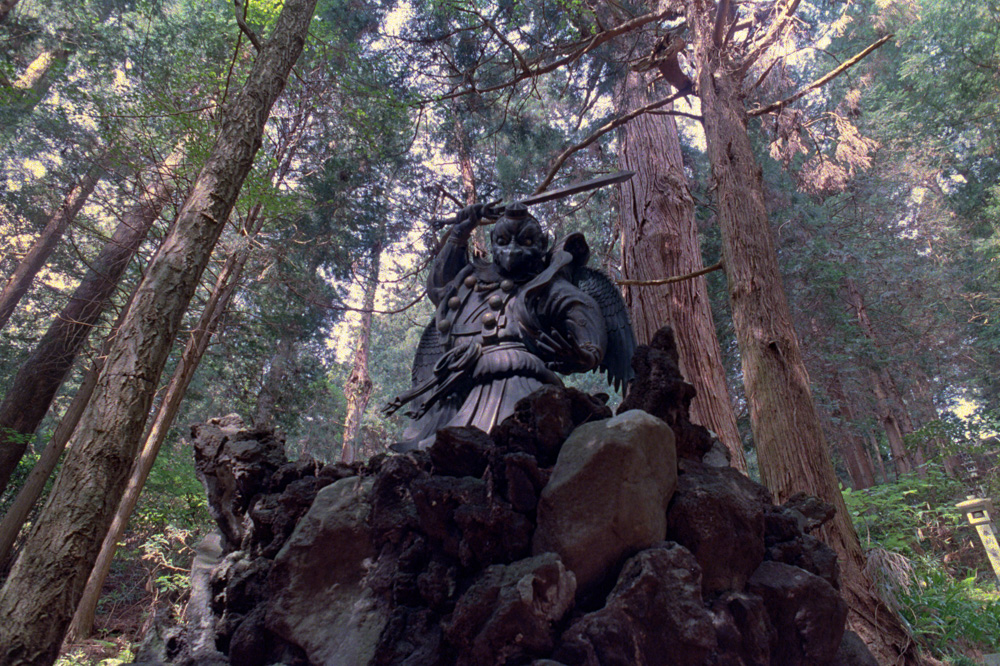
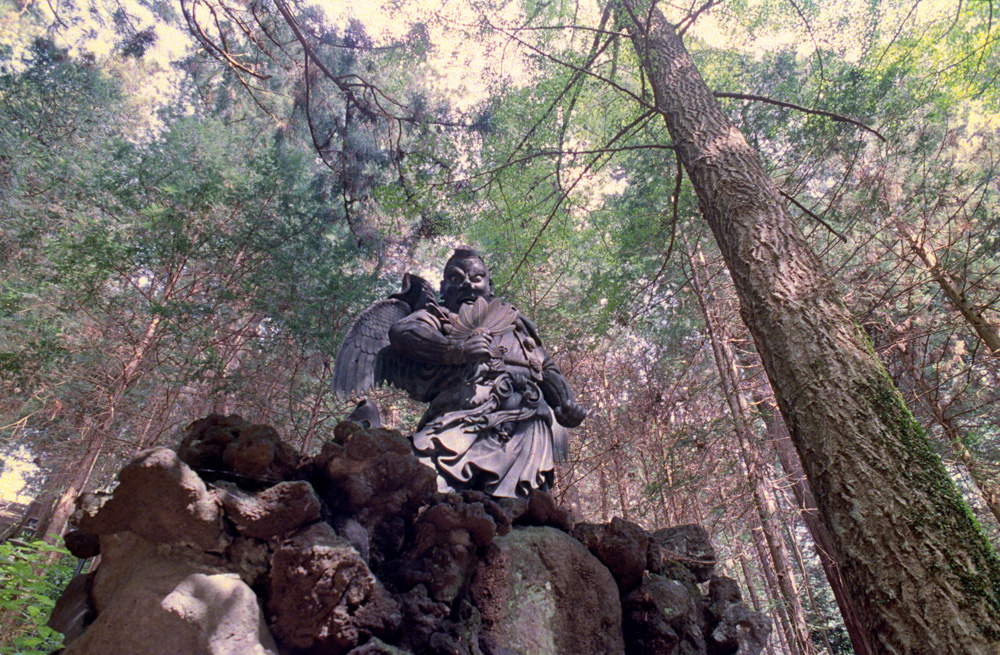
…the pair of the scary tengu that keep watch on us to ensure our safe ascent. It is the same pair we saw down at the Kekkaimon Gate, but in different (and more intimidating) poses. This spot is one of the most impressive and recognizable locations at Daiyuzan Saijoji.
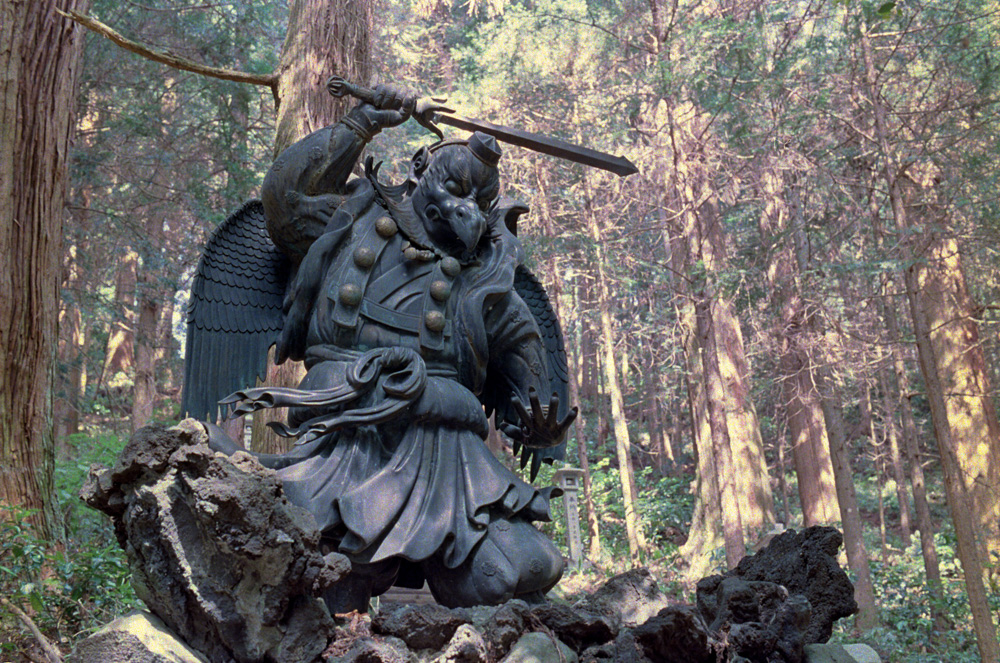
The left tengu is called Kotengu (small tengu, recognized by the head of the crow).
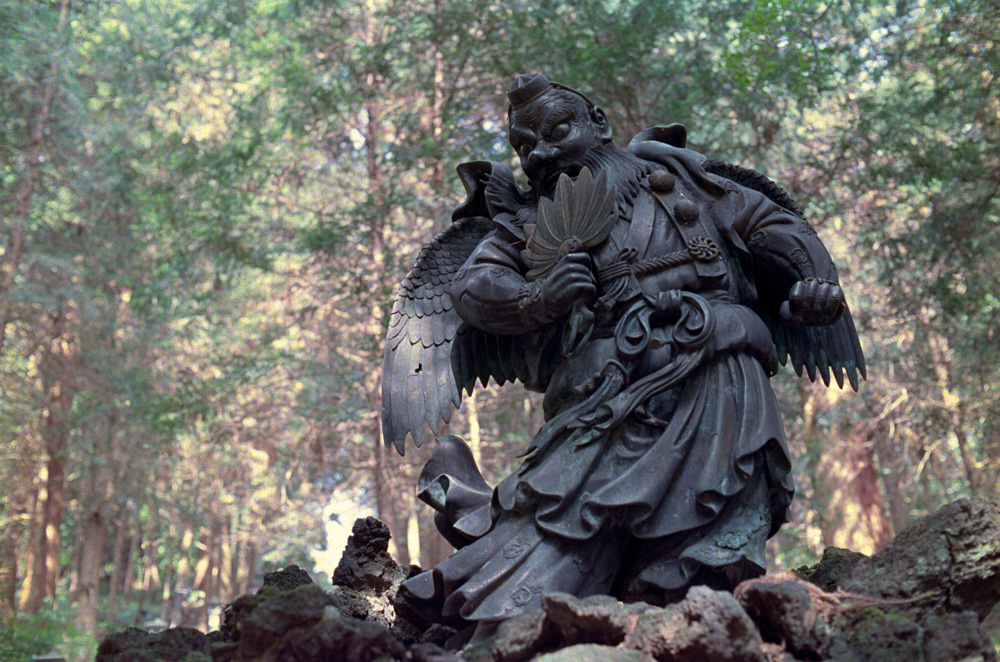
The one on the right is Daitengu (large tengu, with the typical long nose).
After a short photo session, let’s continue up the stairs until we finally reach the Okunoin.
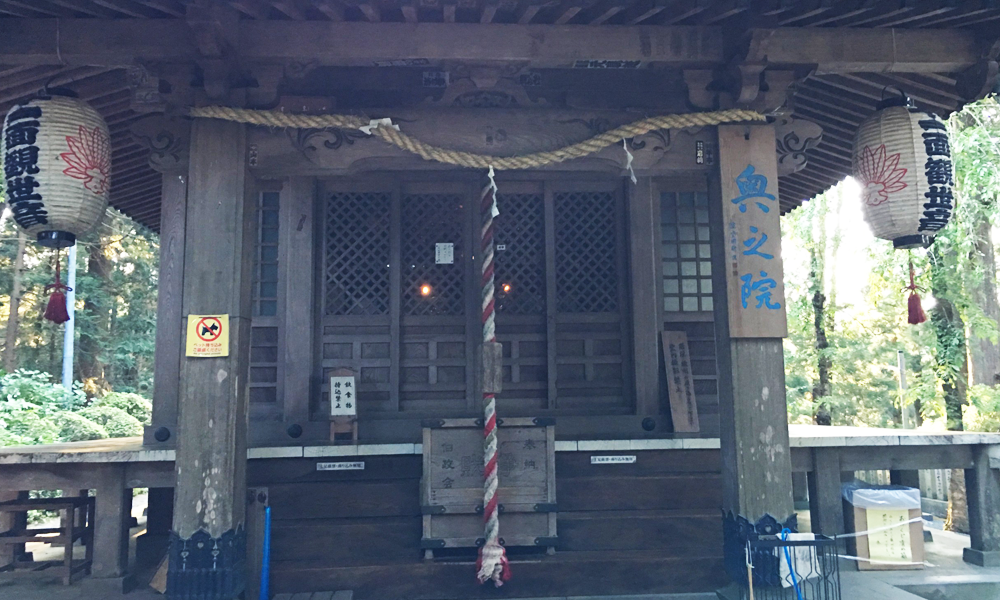
Okunoin, the shrine that stands guard over the entire complex, enshrines the eleven-faced Kanzeon Bosatsu. Rebuilt in 1969, it sits atop the highest point at the Daiyuzan Saijoji. As such, it’s a good spot to finish today’s trip.
Have you recovered from the climb up the stairs? If so, I have a bonus for you.
A nicely calligraphed goshuin of Daiyuzan Saijoji!
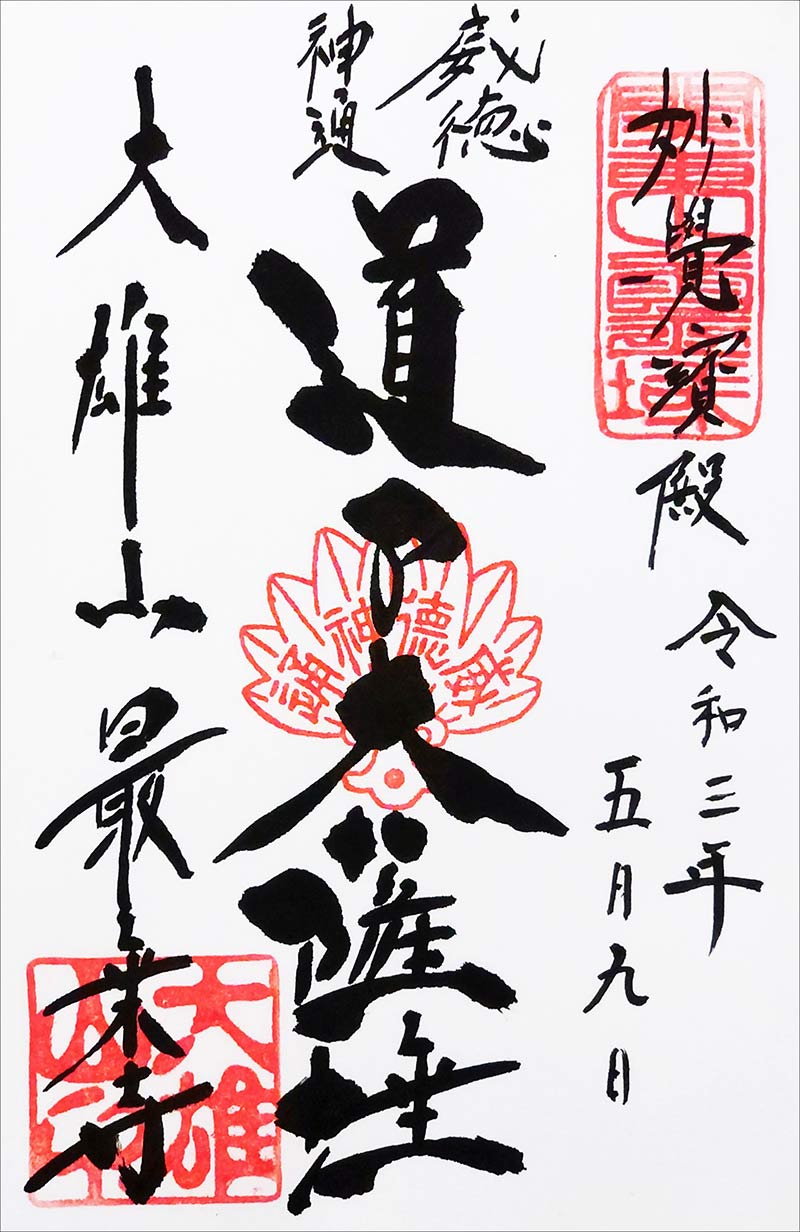
Goshuin is a large seal, stamped with red ink and hand-written in calligraphy. It can be obtained at almost every temple and shrine in Japan, and serves a proof of visitation and a great way to remember your trip.
Daiyuzan Saijoji also offers a few different goshuincho — book of seals. The one with silver looking embossed covers is especially impressive and depicts two famous highlights of this temple: the long stairway with the two tengu on the front, and the geta sandals on the back.
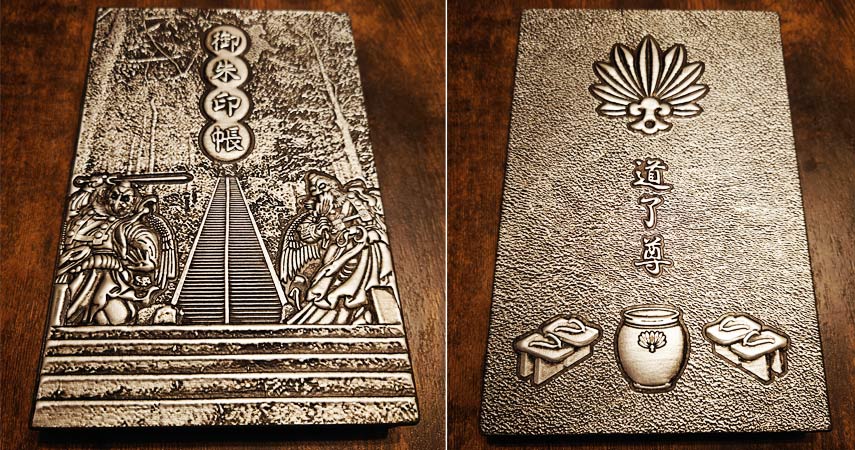
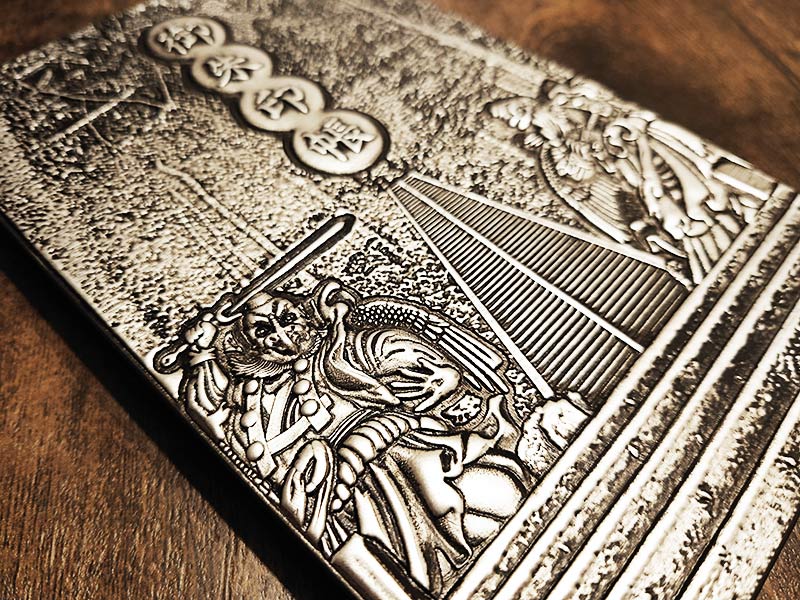
Leave a Reply